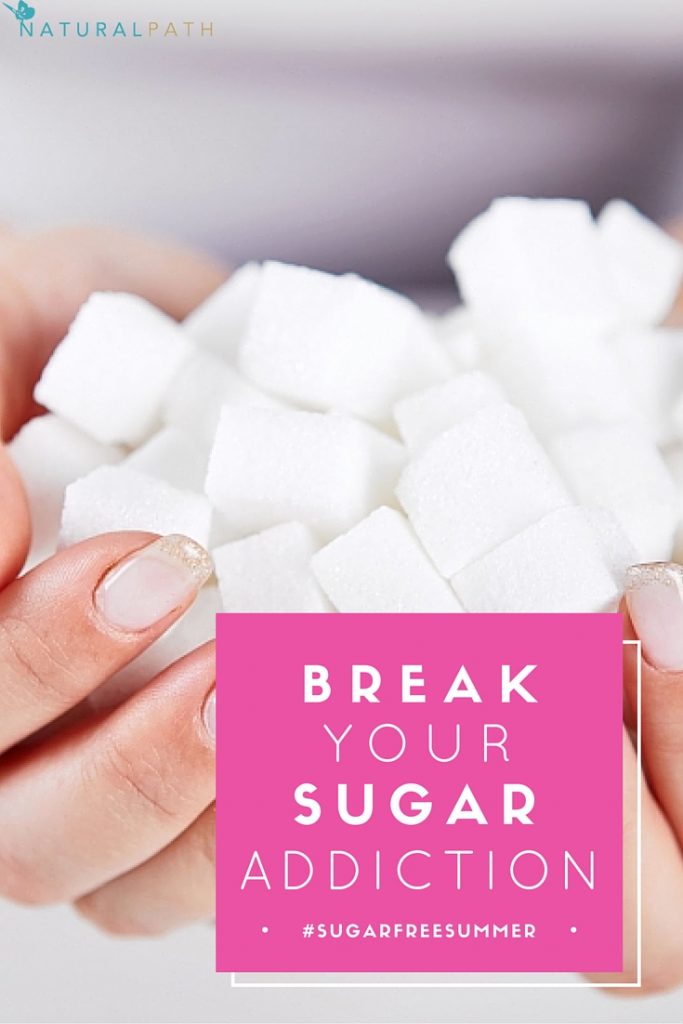Dr. Sarah LoBisco, ND
@DrLoBisco
How Food Can Help Us Stay Healthy and How to Balance Unhealthy Food and Sugar Cravings for the Summer Season (and Always)
With the summer months kicking in, there’s several opportunities to boost healthy lifestyle activities. For example, the shining sun makes it easier to enjoy all the wonderful benefits of the outdoors and encourages more movement and exercise. Another potential excitement, or stressor, during this season is the unpacking of last year’s summer clothes. For those who are not at their ideal weight, less “cover-up” in their garments can be anxiety-provoking for several reasons. These include revealing of previously hidden “imperfections,” reminders of feeling overtaken by overindulgences, or frustration from failed diet and exercise attempts. All of these factors provide opportunities to remind us that being healthy and staying well is important to get the most out of life. After all, it’s hard to enjoy the great outdoors and summer festivities when feeling ill, “bloaty,” and/or run-down (or run-by) cravings for unhealthy treats.
Food as Medicine
What we eat is one of the most important determinants to our health and how we feel. Wholesome, nutritious foods have the potential to prevent disease and modulate our wellness. Furthermore, when we consider on our own unique nutrient needs based on our genetics, the interaction of our environment, current health status, and our belly bugs, we can bring our vitality to an even greater level!
A 2013 article in the Journal of Nutrition reported on these factors of food as medicine when stating the findings of a working group comprised of 75 thought experts convened by the American Society of Nutrition (ASN). This team was brought together to assess the need for the most impactful nutrition research for future “health and well-being of global populations.” The authors wrote:
Proper nutrition offers one of the most effective and least costly ways to decrease the burden of many diseases and their associated risk factors, including obesity. Nutrition research holds the key to increasing our understanding of the causes of obesity and its related comorbidities and thus holds promise to markedly influence global health and economies.1
The article further detailed the following as priorities of focus on food research, indicating how diet impacts health in many ways:
- Individual responses to diet and food
- Healthy growth, development, and reproduction
- Maintenance of health
- Medical management
- Nutrition-related behaviors
- Food supply and environment1
Food for Brain Medicine
Food can specifically nourish our brains and provide mood balancing effects. For example, a 2008 article in Nature Reviews Neuroscience states:
It has long been suspected that the relative abundance of specific nutrients can affect cognitive processes and emotions. Newly described influences of dietary factors on neuronal function and synaptic plasticity have revealed some of the vital mechanisms that are responsible for the action of diet on brain health and mental function. Several gut hormones that can enter the brain, or that are produced in the brain itself, influence cognitive ability. In addition, well-established regulators of synaptic plasticity, such as brain-derived neurotrophic factor, can function as metabolic modulators, responding to peripheral signals such as food intake. Understanding the molecular basis of the effects of food on cognition will help us to determine how best to manipulate diet in order to increase the resistance of neurons to insults and promote mental fitness.
The article continues, “Abundant paleontological evidence suggests that there is a direct relationship between access to food and brain size, and that even small differences in diet can have large effects on survival and reproductive success.”2
Recently, Medscape reported on the use of food for medicine for depression:
Scientists have developed a new evidence-based scale that rates animal- and plant-based foods that improve depressive symptoms. Research on this scale and on foods that help nourish the brain was presented here at a standing-room-only session during the American Psychiatric Association (APA) 2016 Annual Meeting.3
Furthermore, the importance of healthy fats on the brain cannot be understated. I wrote previously about research in this area and the use of fish oil for behavioral support in hostile behavior. An evidence-based review in 2004 in Current Psychiatry also reported impressive positive results from various trials on supporting mood disorders, though no recommendations were given:
Fourteen clinical trials in the past 3 years have examined the potential of omega-3 fatty acids in treating psychiatric disorders. Preliminary findings in at least 700 patients suggest that:
- omega-3 fatty acids used as adjuncts or monotherapy appear well-tolerated and safe in psychiatric disorders
- efficacy data vary by disorder
- the two marine omega-3 fatty acids may differ in efficacy.
Although we cannot offer specific guidance for using omega-3 fatty acids at this time, we can update you on recent trials of these “fish oils” in depression, bipolar disorder, schizophrenia, and other psychiatric disorders.4
Since then, research has abounded and supported the efficacy of healthy fats and fish oils. A 2007 review in Alternative Medicine summarized their findings as follows:
The omega-3 fatty acids docosahexaenoic acid (DHA) and eicosapentaenoic acid (EPA) are orthomolecular, conditionally essential nutrients that enhance quality of life and lower the risk of premature death. They function exclusively via cell membranes, in which they are anchored by phospholipid molecules. DHA is proven essential to pre- and postnatal brain development, whereas EPA seems more influential on behavior and mood. Both DHA and EPA generate neuroprotective metabolites. In double-blind, randomized, controlled trials, DHA and EPA combinations have been shown to benefit attention deficit/hyperactivity disorder (AD/HD), autism, dyspraxia, dyslexia, and aggression. For the affective disorders, meta-analyses confirm benefits in major depressive disorder (MDD) and bipolar disorder, with promising results in schizophrenia and initial benefit for borderline personality disorder. Accelerated cognitive decline and mild cognitive impairment (MCI) correlate with lowered tissue levels of DHA/EPA, and supplementation has improved cognitive function. Huntington disease has responded to EPA. Omega-3 phospholipid supplements that combine DHA/EPA and phospholipids into the same molecule have shown marked promise in early clinical trials. Phosphatidylserine with DHA/EPA attached (Omega-3 PS) has been shown to alleviate AD/HD symptoms.5

Food as an Addiction
Food can therefore have many positive aspects on the body. In the opposite manner, nutrient poor, processed, and chemicalized foods can damage our bodies and provoke unhealthy balance in our biochemistry. These “fake foods” can even be addictive.6,7 In fact, these “foodsuffs” have been scientifically manipulated to increase consumption by manufacturers who have more profit in mind than honorable motives to nourish our bodies. This can create a continued cycle of mindless reaching for harmful substances that continue to harm us.
In a 2015 article on the subject of food addiction, the authors reviewed the neurological studies that demonstrated the similarity between drug abuse and foods. They also review a diagnostic tool and prevention and treatment for food addiction and concluded:
Given that there were similarities with other forms of addictive behavior, the researchers recommend the application of traditional addiction treatment.6
The Sweetest Addiction
Many studies have specifically focused on the connection between sugar consumption and addictive behaviors, similar to drug abuse.8-11
One study also compared sugar imbibing to substances of abuse in rat models and concluded the following:
Food is not ordinarily like a substance of abuse, but intermittent bingeing and deprivation changes that. Based on the observed behavioral and neurochemical similarities between the effects of intermittent sugar access and drugs of abuse, we suggest that sugar, as common as it is, nonetheless meets the criteria for a substance of abuse and may be “addictive” for some individuals when consumed in a “binge-like” manner. This conclusion is reinforced by the changes in limbic system neurochemistry that are similar for the drugs and for sugar. The effects we observe are smaller in magnitude than those produced by drug of abuse such as cocaine or morphine; however, the fact that these behaviors and neurochemical changes can be elicited with a natural reinforcer is interesting. It is not clear from this animal model if intermittent sugar access can result in neglect of social activities as required by the definition of dependency in the DSM-IV-TR (American Psychiatric Association, 2000). Nor is it known whether rats will continue to self-administer sugar despite physical obstacles, such as enduring pain to obtain sugar, as some rats do for cocaine (Deroche-Gamonet et al., 2004). Nonetheless, the extensive series of experiments revealing similarities between sugar-induced and drug-induced behavior and neurochemistry, as chronicled in Sections 4 and 5, lends credence to the concept of “sugar addiction”, gives precision to its definition, and provides a testable model.10
A 2013 abstract from Current Opinion in Clinical Nutrition and Metabolic Care reported more on this powerful reward and craving phenomenon of sugar, which may be stronger than cocaine:
Available evidence in humans shows that sugar and sweetness can induce reward and craving that are comparable in magnitude to those induced by addictive drugs. Although this evidence is limited by the inherent difficulty of comparing different types of rewards and psychological experiences in humans, it is nevertheless supported by recent experimental research on sugar and sweet reward in laboratory rats. Overall, this research has revealed that sugar and sweet reward can not only substitute to addictive drugs, like cocaine, but can even be more rewarding and attractive. At the neurobiological level, the neural substrates of sugar and sweet reward appear to be more robust than those of cocaine (i.e., more resistant to functional failures), possibly reflecting past selective evolutionary pressures for seeking and taking foods high in sugar and calories.11
SUMMARY:The biological robustness in the neural substrates of sugar and sweet reward may be sufficient to explain why many people can have difficultly to control the consumption of foods high in sugar when continuously exposed to them.
The Body Effects of Addiction to Sweetness
Sugar isn’t just harmful to the brain and behavior. Sugar consumption has been associated with many negative health consequences, including cardiovascular disease,12-15which, according to the Center for Disease Control and Prevention (CDC), is the leading cause of death in America.16One prospective cohort association study demonstrated the link between sugar intake and cardiovascular disease mortality. The researchers assessed a “national sample of US adults from the National Health and Nutrition Examination Survey (NHANES, 1988-1994 [III], 1999-2004, and 2005-2010 [n = 31 147]) for the time trend analysis and NHANES III Linked Mortality cohort (1988-2006 [n = 11 733]),” and concluded, “Most US adults consume more added sugar than is recommended for a healthy diet. We observed a significant relationship between added sugar consumption and increased risk for CVD mortality.”12
This has caused many health experts to caution against excess sugar intake. In fact, the American Heart Association and the American Stroke Association applauded the World Health Organization (WHO) for their recommendation that “adults and children limit their free sugars to 10% of total energy with a conditional recommendation of less than 5% of total energy consumed as free sugars; for a 2,000 calorie diet this would limit sugar intake to 12.5 or 6.25 teaspoons of free sugars, respectively. WHO defines free sugars as monosaccharides and disaccharides added to food or naturally present in honey, syrups, fruit juices, and fruit concentrate.” 13The AHA recommendations were similar to in 2014 and 2016, recommending no more than half of a person’s discretionary empty calorie consumption be added sugars. This equaled approximately 6 teaspoons for women and 9 teaspoons for men (100-150 calories a day).13
Besides cardiovascular risk association, sugar consumption is also linked to diabetes,17 obesity,17-19 metabolic syndrome,19 and some cancers.20-21
Summary
The first part of this series reviewed all the ways food can heal and all the ways “fake foods” can harm. Sugar is one of the substances which has been most studied for its addictive properties and health consequences. The obvious solution would be to cut back, but, what if one is struggling with food cravings and food addictions? I discuss this more in Part II.
 Sarah Lobisco, ND, is a graduate of the University of Bridgeport’s College of Naturopathic Medicine (UBCNM). She is licensed in Vermont as a naturopathic doctor and holds a Bachelor of Psychology from State University of New York at Geneseo. Dr. LoBisco is a speaker on integrative health, has several publications, and is a certification candidate in functional medicine. Dr. LoBisco currently incorporates her training as a naturopathic doctor and functional medicine practitioner through writing, researching, private practice, and through her independent contracting work for companies regarding supplements, nutraceuticals, essential oils, and medical foods. Dr. LoBisco also enjoys continuing to educate and empower her readers through her blogs and social media. Her recent blog can be found at www.dr-lobisco.com.
Sarah Lobisco, ND, is a graduate of the University of Bridgeport’s College of Naturopathic Medicine (UBCNM). She is licensed in Vermont as a naturopathic doctor and holds a Bachelor of Psychology from State University of New York at Geneseo. Dr. LoBisco is a speaker on integrative health, has several publications, and is a certification candidate in functional medicine. Dr. LoBisco currently incorporates her training as a naturopathic doctor and functional medicine practitioner through writing, researching, private practice, and through her independent contracting work for companies regarding supplements, nutraceuticals, essential oils, and medical foods. Dr. LoBisco also enjoys continuing to educate and empower her readers through her blogs and social media. Her recent blog can be found at www.dr-lobisco.com.
References:
- Ohlhorst SD, Russell R, Bier D, Klurfeld DM, et al. Nutrition research to affect food and a healthy life span. J Nutr. 2013 Aug;143(8):1349-54. doi: 10.3945/jn.113.180638.
- Gómez-Pinilla F. Brain foods: the effects of nutrients on brain function. Nature reviews Neuroscience. 2008;9(7):568-578. doi:10.1038/nrn2421.
- Anderson P. New ‘Brain Food’ Scale Flags Best Nutrients for Depression. Medscape Medical News. Conference News. May 26, 2016.
- Martinez JM, Marangell LB. Omega-3 fatty acids: Do ‘fish oils’ have a therapeutic role in psychiatry? Evidence Based Reviews. Current Psychiatry. January 2004; 3(1). Available at: http://www.currentpsychiatry.com/home/article/omega-3-fatty-acids-do-fish-oils-have-a-therapeutic-role-in-psychiatry/64edc1316cffa2add4d24423031e24e7.html?tx_ttnews[sViewPointer]=1
- Kidd PM. Omega-3 DHA and EPA for cognition, behavior, and mood: clinical findings and structural-functional synergies with cell membrane phospholipids. Altern Med Rev. 2007 Sep;12(3):207-27.
- Dimitrijević I1, Popović N, Sabljak V, et al. Food addiction-diagnosis and treatment. Psychiatr Danub. 2015 Mar;27(1):101-6.
- Volkow ND1, Wang GJ, Fowler JS, Logan J, Jayne M, Franceschi D, Wong C, Gatley SJ, Gifford AN, Ding YS, Pappas N.”Nonhedonic” food motivation in humans involves dopamine in the dorsal striatum and methylphenidate amplifies this effect (abstract). Synapse. 2002 Jun 1;44(3):175-80.
- Belinda S Lennerz, David C Alsop, Laura M Holsen, Emily Stern, Rafael Rojas, Cara B Ebbeling, Jill M Goldstein, & David S Ludwig. Effects of dietary glycemic index on brain regions related to reward and craving in men. Am J Clin Nutr. September 2013. doi: 10.3945/ajcn.113.064113
- Avena NM, Rada P, Hoebel BG. Evidence for sugar addiction: Behavioral and neurochemical effects of intermittent, excessive sugar intake. Neuroscience and biobehavioral reviews. 2008;32(1):20-39. doi:10.1016/j.neubiorev.2007.04.019.
- Avena NM, Rada P, Hoebel BG. Evidence for sugar addiction: Behavioral and neurochemical effects of intermittent, excessive sugar intake. Neuroscience and biobehavioral reviews. 2008;32(1):20-39. doi:10.1016/j.neubiorev.2007.04.019.
- Ahmed S, Guillem K, Vandaele Y. Sugar addiction: pushing the drug-sugar analogy to the limit. Curr Opin Clin Nutr Metab Care. 2013 Jul;16(4):434-9. doi: 10.1097/MCO.0b013e328361c8b8.
- Yang Q, Zhang Z, Gregg EW, Flanders W, Merritt R, Hu FB. Added Sugar Intake and Cardiovascular Diseases Mortality Among US Adults. JAMA Intern Med.2014;174(4):516-524. doi:10.1001/jamainternmed.2013.13563.
- American Heart Association and American Stroke Association. American Heart Association Comments on the World Health Organization’s “Guideline: Sugars intake for adults and children.” March 31, 2014. https://www.heart.org/idc/groups/ahaecc-public/@wcm/@adv/documents/downloadable/ucm_463487.pdf
- American Heart Association. By Any Other Name It’s Still Sweetener. February 4, 2016. http://www.heart.org/HEARTORG/HealthyLiving/HealthyEating/Nutrition/By-Any-Other-Name-Its-Still-Sweetener_UCM_437368_Article.jsp#.V1Ti6ORrVSA
- Chen L, Caballero B, Mitchell DC, et al. Reducing consumption of sugar-sweetened beverages is associated with reduced blood pressure: a prospective study among United States adults. Circulation. 2010;121(22):2398-2406.
- Center for Disease Control and Prevention (CDC). Heart Disease Statistics and Stats. Heart Disease Facts. CDC Web site: http://www.cdc.gov/heartdisease/facts.htm. August 10, 2015.
- Malik VS, Popkin BM, Bray GA, Després JP, Hu FB. Sugar-sweetened beverages, obesity, type 2 diabetes mellitus, and cardiovascular disease risk. Circulation. 2010;121(11):1356-1364.
- Malik VS, Schulze MB, Hu FB. Intake of sugar-sweetened beverages and weight gain: a systematic review. The American journal of clinical nutrition. 2006;84(2):274-288.
- Tappy L, Lê K-A. Health Effects of Fructose and Fructose-Containing Caloric Sweeteners: Where Do We Stand 10 Years After the Initial Whistle Blowings? Current Diabetes Reports. 2015;15(8):54. doi:10.1007/s11892-015-0627-0.
- University of Texas M. D. Anderson Cancer Center. Sugars in Western diets increase risk for breast cancer tumors and metastasis: Study in mice points to sugar’s impact on inflammatory pathways as culprit. ScienceDaily. 4 January 2016. www.sciencedaily.com/releases/2016/01/160104080034.htm.
- Myers AP, Cantley LC. Sugar free, cancer free? Nutrition (Burbank, Los Angeles County, Calif). 2012;28(10):1036. doi:10.1016/j.nut.2012.07.004.
















